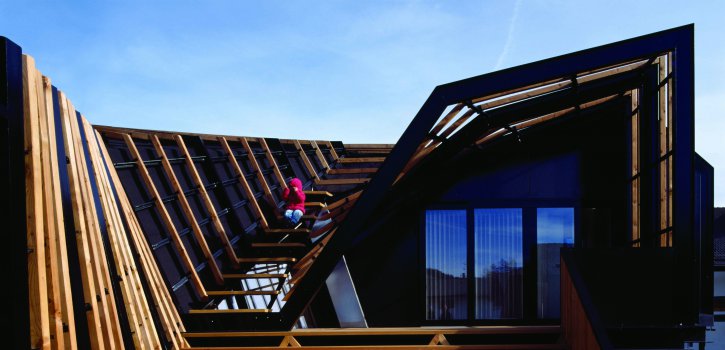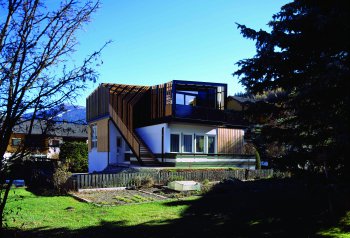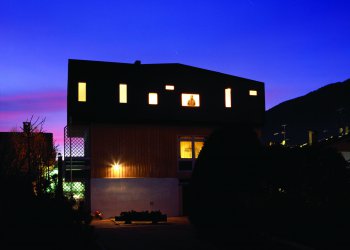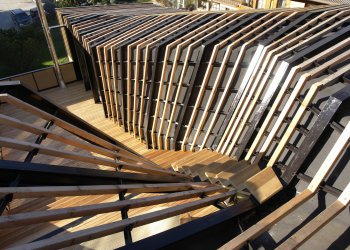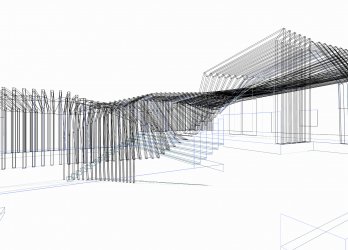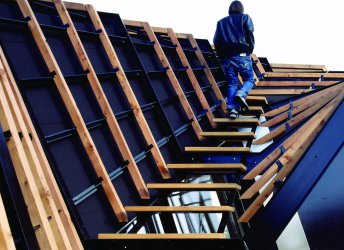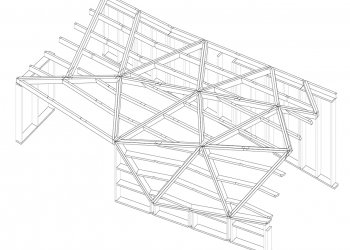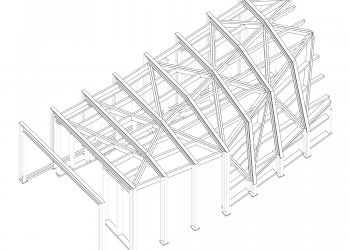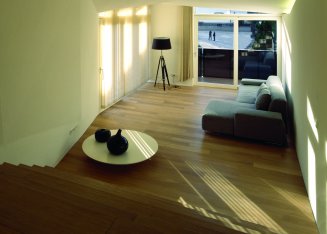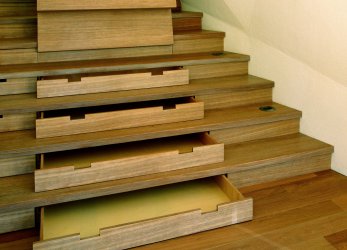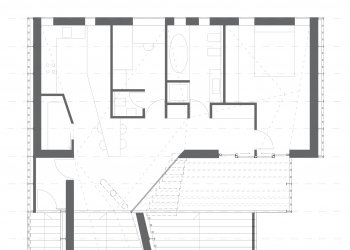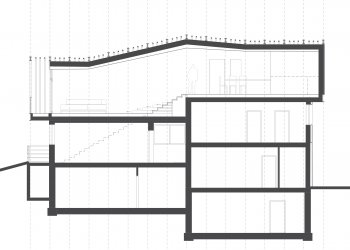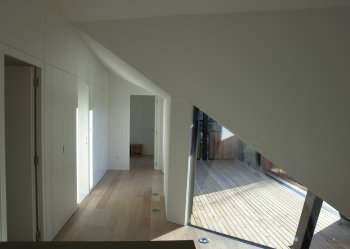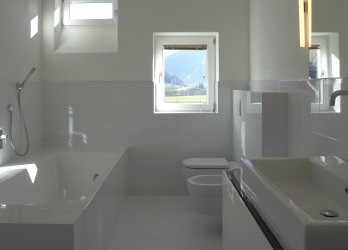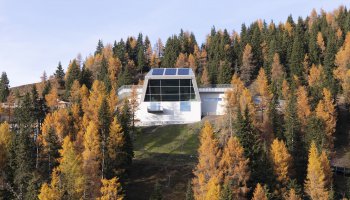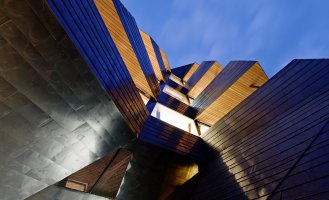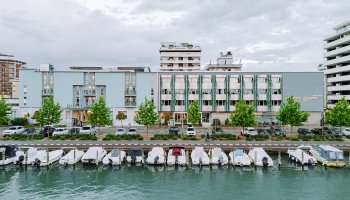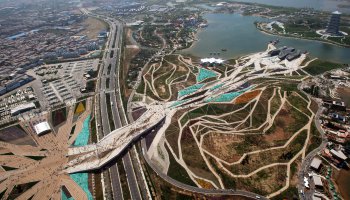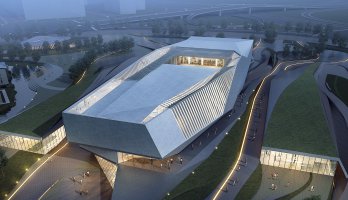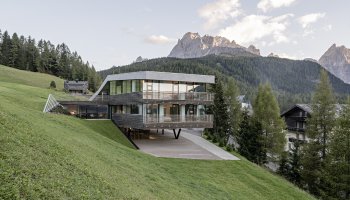An extension as a parasite, which, starting from the structure of the host, finds its own independent character.
ESKER HOUSE
TYPE Residential, Interior, Extension
STATUS Competition 1. prize, Built
LOCATION San Candido/Innichen, Italy
YEAR 2006
CLIENT Private
DESIGN TEAM Claude Ballini, Eva Castro, Ulla Hell, Holger Kehne, Angelika Mair, Libny Pacheco, Peter Pichler
PHOTO CREDIT Cristobal Palma, Holger Kehne
Esker House (Esker = stratified geological formation) is a self-contained residential unit placed on top of an existing house from the 1960s. The project has been developed as a parasite which started from adopting the structure of the host and gradually differentiated into its own unique organization and morphology. The project is formed by a series of steel and timber frames that deform to recreate the smooth hillsides of the surrounding dolomites. This partly accessible roofscape also determines the spatial character inside- the spaces are enfolded by an angular and dynamic series of planes creating new and ever-changing perspectives and spatial constellations. The unique stratified morphology and construction system started off from projecting each step of the external staircase as a modulor that then was multiplied as frames. These frames enable the subsequent deformation and softening of the overall geometry.
The interior spaces are the reflection of the exterior geometry with folded planes accentuating the flow through the open split-level plan. Their character is determined by the transgressions from the Cartesian orthogonal layout (determined in part by the structure below and functional requirements) towards the soft and fluid morphology of the roofscape.
